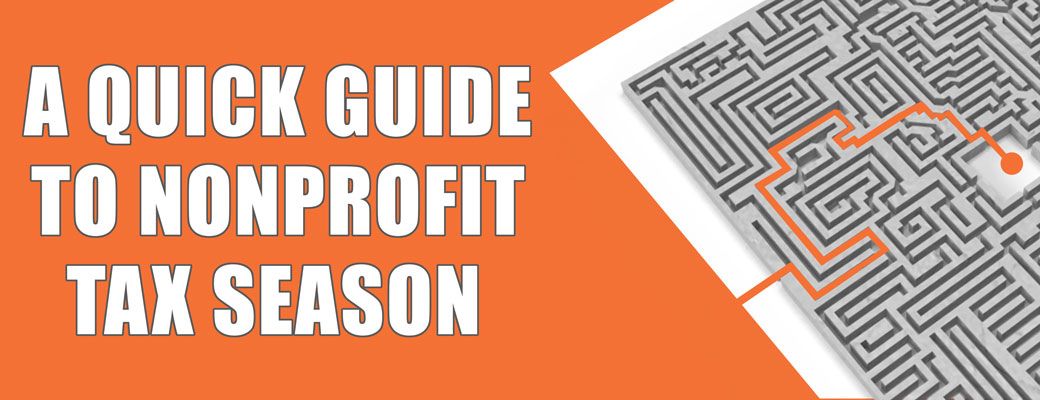A Quick Guide to Nonprofit Tax Season

Tax season can be confusing for nonprofits. Even though your organization is considered “tax-exempt” by the federal government, you are still required to file paperwork and documentation to the IRS. The plus side is that unlike most for-profit businesses, your nonprofit won’t be paying taxes.
However, filing your annual returns can be a long and arduous process. There is a lot you need to know to maintain your tax-exempt status. So whether this is your first time filing or you’re in need of a quick refresher, this should serve as a good roadmap for navigating your nonprofit’s tax season.
Do I Need to File a Tax Return?
The only form your nonprofit will need to submit come tax season is Form 990. The form is due on the 15th day of the 5th month after the end of your fiscal year. That means if the end of your fiscal year was December 31, then you would have to submit it before May 15.
If you fail to submit the form before it’s due, your nonprofit will face a penalty of $20 every day with a maximum penalty of $10,000 or 5% of your organization’s gross receipts if you make less than one million in a year. If you do make over one million a year, the penalty is much harsher and is $100 a day with a maximum penalty of $50,000.
Failure to submit your paperwork after three years will result in losing your tax-exempt status, so be sure to file your forms on time to avoid harsh penalties.
Which Form Should I Choose?
Even though you only need to file Form 990, there are three options of the form to choose from. Each differs based on the size of your nonprofit and you should have a clear idea of which one to choose based on your gross income.
- Form 990 EZ – If your gross income amounts to more than $200,000 but less than $500,000 in gross receipts.
- Form 990 – If your total assets are more than $500,000, then this is the form for you.
- Form 990-N – If your gross receipts and income are less than or equal to $50,000.
- Not Required to File – Some organizations are exempt from filing a Form 990, including religious institutions, and certain government and political organizations. If you believe you fall under this category, it’s best to check with an advisor to know for sure.
What is Form 990 for?
Form 990 is used to evaluate your nonprofit’s finances, programs, and board members to ensure your nonprofit isn’t using funds inappropriately. You will also need to report how much of your organization’s expenses were allocated to each program and fundraising event. The process can take a long time so it’s important that you give yourself enough time to complete it. Five months can go by quickly and the last thing you want is to rush assembling all this information.
You should also be aware that your Form 990 must be available to the public. This is for anyone who might want to research your nonprofit before deciding to contribute to your cause. Nonprofits that want to appear transparent to their board members, stakeholders, grantors, and donors often upload their form on their website for easier access.
How to Prepare for Next Year
Don’t forget that next year you will need to report on all your finances and programs once again. In order to prepare, be sure to record all the money you allocated toward your organization’s programs and fundraising events throughout the year. That way you can ease the burden when it’s time to file next year’s return and you can focus on running your nonprofit even during the busiest time of the year.
